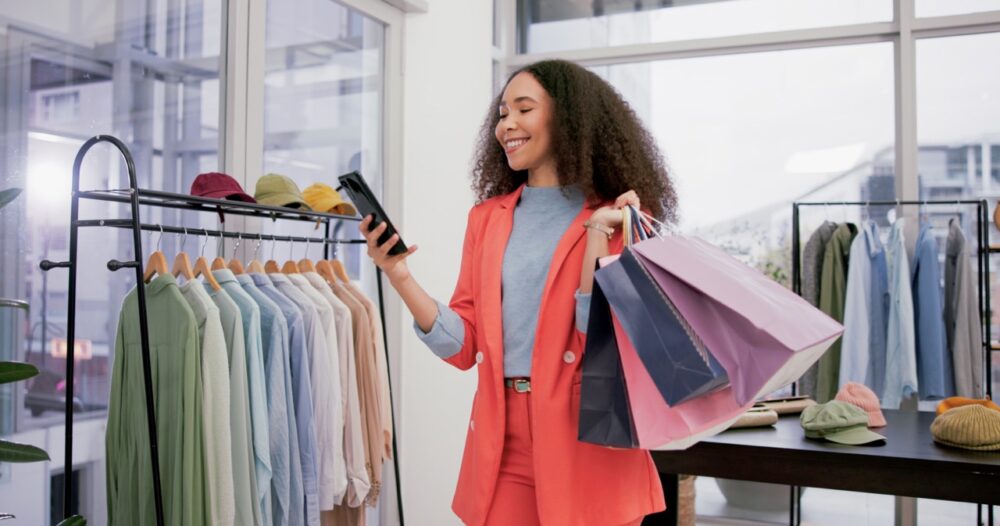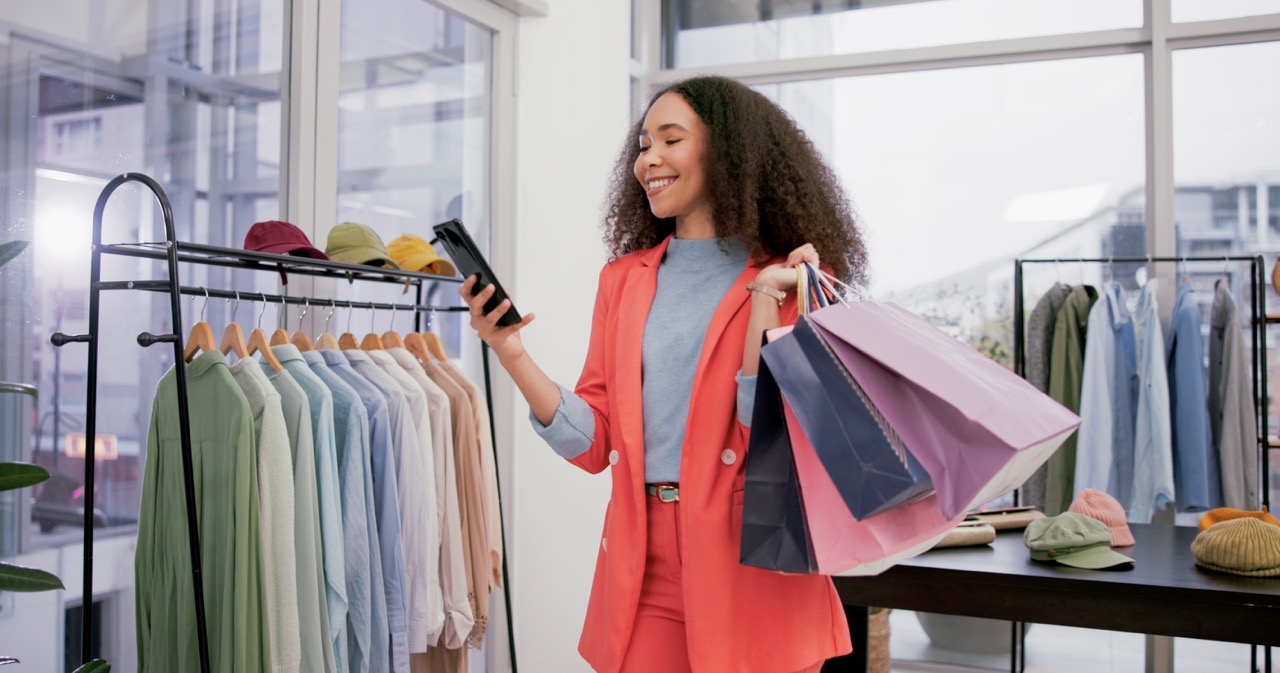In today’s highly competitive retail landscape, creating memorable experiences for customers is essential for success. Retailers, whether large chains or small businesses, must leverage every tool available to engage customers and provide unique experiences.
This quick guide explores how to create impactful retail experiences in physical stores, online platforms, and through social media channels, offering practical examples and strategies.

Physical Retail Experiences
Despite the growth of e-commerce, physical retail stores remain a crucial part of the shopping experience. The tactile nature of in-store shopping, combined with the opportunity for face-to-face interaction, offers unique advantages.
Immersive Store Designs
Creating an immersive environment can significantly enhance the in-store experience. Apple stores, for instance, are renowned for their sleek, minimalist design that encourages hands-on interaction with products. Similarly, fashion retailer Glossier has created Instagrammable stores with playful designs and interactive elements that draw in customers.
Personalised Service
Personalisation is another key to success in physical retail. Stores like Nordstrom and Harrods offer personalised shopping experiences where dedicated stylists assist customers in finding items tailored to their tastes and preferences. This level of attention can foster loyalty and repeat business.
Interactive Displays and Technology
Incorporating interactive displays and technology can enhance the in-store experience. Retailers like Nike and Adidas have introduced digital screens and interactive mirrors that allow customers to see different product variations and receive additional information. Magic mirrors in fitting rooms, for instance, enable customers to request different sizes or colours without leaving the room, improving convenience and satisfaction.
In-Store Events and Workshops
Hosting events and workshops can create a community feel and draw customers into physical stores. Bookstores like Waterstones often host author signings and readings, while beauty brands like Lush offer in-store workshops on skincare routines and product making. These events provide valuable experiences that cannot be replicated online, encouraging customers to visit and engage with the brand.
Mixed-Use Spaces
Incorporating mixed-use spaces, such as cafes, coffee shops, or even bars, can transform a traditional retail environment into a destination. Brands like Barnes & Noble have successfully integrated cafes into their bookstores, providing customers with a place to relax and enjoy a cup of coffee while browsing. These additions can enhance the shopping experience, making it more enjoyable and encouraging customers to spend more time in-store.
Online Retail Experiences
The online retail space is ever-expanding, and providing an engaging and seamless experience is critical.
User-Friendly Websites
A well-designed, user-friendly website is the foundation of a good online retail experience. ASOS, a popular online fashion retailer, excels with its intuitive website layout, comprehensive product descriptions, and high-quality images. Additionally, the inclusion of customer reviews and detailed sizing guides helps customers make informed purchasing decisions.
Augmented Reality (AR)
Augmented reality is transforming the online shopping experience. IKEA’s AR app, IKEA Place, allows customers to visualise how furniture will look in their homes before making a purchase. This technology not only enhances the shopping experience but also reduces the likelihood of returns, benefiting both the retailer and the customer.
Efficient Delivery and Returns
Fast and reliable delivery services, coupled with a hassle-free returns policy, are essential for online retail success. Retailers like Amazon and Zalando have set high standards with their efficient logistics, making them favourites among online shoppers.
Personalised Recommendations
Online retailers can utilise algorithms and customer data to provide personalised recommendations. Netflix and Spotify, though not traditional retailers, have mastered the art of personalised content delivery, creating a highly tailored experience for users. Similarly, Amazon uses browsing and purchase history to suggest products that align with customer preferences.
Virtual Assistants and Chatbots
Integrating virtual assistants and chatbots can enhance customer service on online platforms. Brands like H&M use chatbots to assist with common inquiries, provide style advice, and streamline the shopping process. These tools ensure customers receive timely support, enhancing their overall shopping experience. Artificial intelligence (AI) powers these virtual assistants, enabling them to learn from customer interactions and continually improve their responses.
Simple Transactions and Payment Options
Ensuring a smooth and frictionless transaction process is crucial for online retailers. Offering various payment options, such as credit cards, digital wallets like Apple Pay and Google Wallet, and payment plans through services like Klarna or Afterpay, can cater to a broader customer base. Online retailers should focus on creating a streamlined checkout process that minimises steps and potential barriers. For example, Amazon’s one-click purchasing option significantly reduces the time and effort required to complete a transaction, enhancing the customer experience and reducing cart abandonment rates.
Social Media Retail Experiences
Social media platforms are powerful tools for engaging customers and driving sales. Effective use of social media can create a community around a brand and foster customer loyalty.
Influencer Partnerships
Collaborating with influencers can significantly boost a brand’s visibility and credibility. Fashion brand Revolve has mastered this by working with influencers who showcase their products in real-life settings, providing authentic endorsements that resonate with their target audience.
Interactive Content
Interactive content such as polls, quizzes, and live videos can increase engagement and create a more dynamic relationship with customers. Beauty brand Sephora uses Instagram Stories to share makeup tutorials, product launches, and behind-the-scenes content, encouraging interaction and building a loyal community.
Shoppable Posts
Social media platforms like Instagram and Facebook have integrated shopping features that allow users to purchase products directly from posts. This seamless integration simplifies the shopping process and can significantly boost sales. Brands like Zara and H&M use shoppable posts to great effect, making it easy for followers to buy the items they see.
Consistent, Informative, and Engaging Posts
Maintaining a consistent posting schedule with informative and engaging content is crucial for social media success. Regular updates help keep the brand at the forefront of customers’ minds and can establish a reliable voice. For instance, Patagonia consistently shares posts that align with its brand values of environmental sustainability, including stories about their products, conservation efforts, and customer testimonials. This strategy not only informs but also engages their audience, reinforcing brand loyalty.
Embracing Omnichannel Retail
A successful retail strategy often involves integrating physical, online, and social media experiences to create a cohesive omnichannel presence. This approach ensures that customers have a consistent and engaging experience, regardless of how they choose to shop.
Unified Branding
Maintaining a consistent brand identity across all channels is crucial. Nike, for example, ensures that its branding is uniform across its physical stores, website, and social media platforms. This consistency helps to build a strong brand image and fosters trust among customers.
Seamless Integration
Technology can facilitate seamless integration between different retail channels. Click-and-collect services, where customers purchase online and pick up in-store, are becoming increasingly popular. Retailers like John Lewis and Tesco offer this service, combining the convenience of online shopping with the immediacy of in-store pickup. This model not only enhances customer satisfaction by offering flexibility and speed but also drives additional foot traffic into physical stores, where customers are likely to make additional purchases.
Furthermore, integrating customer data across these channels enables a smoother and more personalised shopping experience. For example, a customer can start their shopping journey online by browsing products and reading reviews, choose to pick up the product in-store, and receive personalised recommendations based on their purchase history when they arrive. This kind of seamless integration ensures that the customer’s journey is cohesive and convenient, no matter where they choose to shop.
Data Utilisation
Leveraging customer data from various channels can provide valuable insights into shopping behaviour and preferences. Retailers can use this data to personalise marketing efforts and improve the overall customer experience. For example, Starbucks uses its mobile app to collect data on customer preferences, enabling them to offer personalised promotions and recommendations.
Five Top Tips for Enhancing Customer Experience
- Emphasise Personalisation: Customise the shopping journey to meet individual customer preferences, both online and in-store. Utilise customer data to provide tailored recommendations and personalised services that address each shopper’s unique needs.
- Adopt Customer-Focused Technology: Integrate technologies such as AR, VR, AI, and interactive displays to improve the customer experience. Ensure these tools are intuitive and enhance convenience, making the shopping process smoother and more engaging.
- Create Engaging and Informative Content Across Channels: Consistently provide valuable content through social media, online platforms, and in-store displays. Use informative and captivating content to keep customers engaged, and foster a strong community around your brand by encouraging interaction and user-generated content.
- Ensure Seamless Omnichannel Integration: Develop a strategy that offers a cohesive and seamless experience across all shopping channels. Leverage technology to effectively integrate online and offline channels, and provide a variety of easy-to-use payment options to streamline transactions.
- Offer Loyalty Programs and Incentives: Implement loyalty programs that reward repeat customers and provide incentives for continued engagement. These can include points-based systems, exclusive discounts, early access to sales, or special events. Loyalty programs encourage repeat business and help build a dedicated customer base, with studies showing that loyal customers are more likely to make additional purchases and recommend the brand to others
Integrating these strategies is crucial for retailers aiming to thrive in the modern market. As consumer expectations continue to evolve, businesses must be forward-thinking and adaptable to remain competitive. Regardless of size, retailers need to embrace innovative methods to enhance the customer experience. This includes leveraging advanced technologies, creating engaging content, and ensuring seamless integration across all channels.
Being adaptable and forward-thinking is particularly important in today’s fast-paced retail environment. Customers are more informed and have higher expectations than ever before. They seek personalised experiences, efficient service, and meaningful interactions with brands. Retailers that fail to adapt risk falling behind as competitors innovate and capture market share. Implementing these strategies can help create a retail environment that not only meets but exceeds customer expectations, turning occasional shoppers into loyal patrons.
Ultimately, retailers must strive to become destinations that customers want to visit, whether online or in-store. By focusing on creating memorable and engaging experiences, businesses can foster stronger customer relationships, enhance brand loyalty, and drive long-term success. In a world where the retail landscape is constantly changing, staying ahead of the curve and continuously improving the customer experience is key to sustained growth and profitability.
















